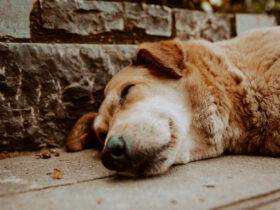Discovering that your beloved furry friend has been diagnosed with IVDD (Intervertebral Disc Disease) can be a worrisome experience. As a devoted pet parent, you want to ensure the best possible treatment for IVVD in dogs. In this comprehensive guide, we will delve into the world of IVDD treatment for dogs. From understanding the condition to exploring effective treatment options, this article will provide you with valuable insights to help your dog on the road to recovery. Let’s embark on this journey together
What is IVDD and How Does it Affect Dogs?
When it comes to understanding IVDD (Intervertebral Disc Disease) and its impact on dogs, knowledge is key for effective treatment for ivdd in dogs. This section will provide you with comprehensive insights into this condition, its causes, and how it affects our furry friends.
What is IVDD?
IVDD is a spinal disorder that primarily affects dogs. It occurs when the intervertebral discs, which act as cushions between the spinal vertebrae, become degenerated or herniated. These discs consist of an outer fibrous ring and a gel-like inner core. When the outer ring weakens or ruptures, the inner core can put pressure on the spinal cord or nerves, causing pain, neurological symptoms, and mobility issues.
What is the cause of IVDD in my dog?
The real cause of IVdd remains unknown. However, there are different causes that can contribute to its development. for some breeds of dog such as Dachshunds, Shih Tzus, Beagles, and Corgis, are genetically predisposed to IVDD. in the same vain, there are certain risk factors such as obesity, physical trauma, and age-related degeneration of the intervertebral discs.
How can I identify Signs and Symptoms of IVDD.
In other to offer best treatment for ivdd in dogs, how to recognizing the signs of IVDD is crucial for early intervention and treatment.
The symptoms can vary depending on the severity and location of the affected disc. Some of the common signs of IVDD in dogs include:
- Back or neck pain, which may be mild or severe.
- Reluctance to jump, climb stairs, or engage in regular activities.
- Stiffness or difficulty in getting up or lying down.
- Hind limb weakness or paralysis.
- Loss of bladder or bowel control
why is important to identify ivdd early?
Knowing early enough is essential for effective treatment for ivdd in dogs. This is so important because of effective treatment of ivdd. If you notice any signs or symptoms mentioned above, it’s essential to seek veterinary assistance promptly.
Your veterinarian will perform a thorough examination, which may include a neurological evaluation and diagnostic tests such as X-rays, CT scans, or an MRI. These tests help determine the location and severity of the disc disease, guiding the treatment plan.
Having a perfect understanding of the basics of IVDD, its impact on the spinal discs, common signs, and the importance of early detection, you are better equipped to navigate your dog’s treatment journey. In the next sections, we will explore various treatment options, both conservative and surgical, that can help alleviate pain and restore your canine companion’s quality of life.
when do i go for IVDD check up for my dog?
When it comes to IVDD in dogs, accurate diagnosis plays a pivotal role in developing an effective treatment plan. In this section, we will explore the diagnostic procedures and veterinary interventions that are crucial for understanding the extent of the condition and providing appropriate care
When to Consult a Veterinarian for Suspected IVDD
If you suspect that your dog may be experiencing IVDD-related symptoms or if they exhibit any signs of back pain, mobility issues, or neurological abnormalities, it is essential to seek veterinary assistance promptly. Early intervention can help prevent further damage and increase the chances of a successful treatment outcome.
During your visit to the veterinarian, they will conduct a thorough examination of your dog. This examination may include assessing their gait, range of motion, and pain responses. The veterinarian will also perform a neurological evaluation to check for any signs of nerve damage or deficits.
best treatment for ivdd in dogs
Collaborating with Your Veterinarian to Develop a Personalized Treatment Plan. The treatment plan will depend on factors such as the severity of the condition, the presence of neurological deficits, and your dog’s overall health.
is IVDD Treatment for dogs expensive?
what is the cost for effective treatment for ivdd in dogs, is a common question pet owners ask themselves. It is crucial to discuss the financial aspects of IVDD treatment with your veterinarian. The cost can vary depending on the required diagnostic tests, medications, rehabilitation sessions, or potential surgery. Pet insurance can provide financial assistance, so consider exploring insurance options to help cover the costs associated with IVDD treatment. you can consult other less expensive treatment for ivdd in dogs in vets out of the city centres.
By understanding the importance of early veterinary intervention, diagnostic procedures, and collaboration with your veterinarian, you are taking the necessary steps to provide the best possible care for your dog. In the following sections, we will explore conservative and surgical treatment options for IVDD, enabling you to make informed decisions about your dog’s well-being.
home treatment for ivdd in dogs
There are some practices that can be carried out at home to treat your dog ivdd issue particularly in mild to moderate cases. This section will delve into the various non surgical treatment for ivdd in dogs. this ranges from focusing on pain management, rest, and rehabilitation.
home treatment for ivdd in dogs aims to alleviate pain, reduce inflammation, and provide the necessary conditions for the body to heal naturally. While it may not be suitable for all cases, home treatment is often the first line of defense against IVDD.
Rest is crucial for dogs with IVDD, as it allows the body to heal and reduces the risk of further disc herniation. Your veterinarian may recommend crate rest or confining your dog to a small, safe area to minimize movement. This restricted activity ensures that your dog avoids excessive jumping, running, or any activities that could exacerbate the condition.
To manage pain and inflammation associated with IVDD, your veterinarian may prescribe medications. Nonsteroidal anti-inflammatory drugs (NSAIDs) can help reduce pain and inflammation, improving your dog’s comfort level. Additionally, analgesics or pain relievers may be prescribed to provide further pain relief. it is important to avoid drugs like amoxicilline when it is not prescribed by your vet.
Are physical exercise good for ivdd treatment in dogs
Physical therapy and rehabilitation exercises play a crucial role in restoring your dog’s mobility and strengthening their muscles. Your veterinarian or a certified canine rehabilitation specialist can guide you in performing appropriate exercises tailored to your dog’s specific needs. These exercises may include passive range of motion exercises, hydrotherapy, laser therapy, and therapeutic massage. Rehabilitation helps improve blood circulation, promotes healing, and enhances your dog’s overall well-being.
By incorporating home treatment options into your dog’s IVDD care plan, you are providing them with pain relief, promoting healing, and improving their quality of life. In the next section, we will explore surgical interventions for severe IVDD cases, understanding when surgery may be necessary and the associated benefits and risks
General conclusion
As you navigate the realm of IVDD treatment for your pet, remember that knowledge, patience, and love are the keys to a successful recovery. From home measures to surgical interventions, each step you take brings your dog closer to a healthier, pain-free life. Additionally, if you decide to open your heart and home to a dog in need, the journey of adoption will not only bring joy to your life but also provide a second chance to a deserving canine companion. Together, let’s embark on this remarkable journey of compassion, healing, and resilience.






Leave a Reply